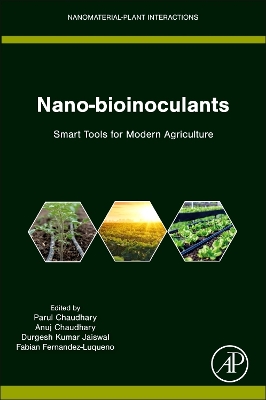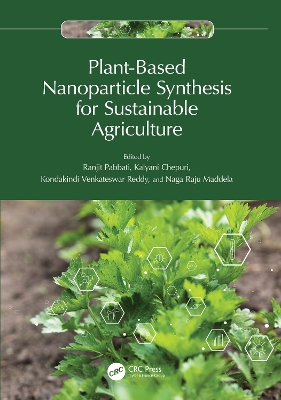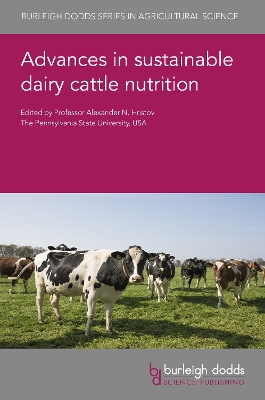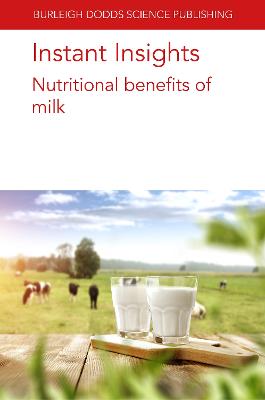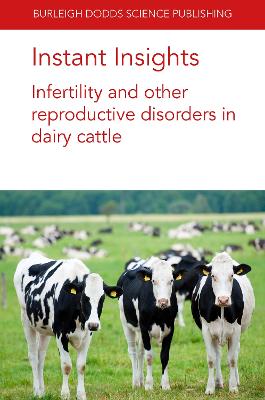Instant Insights: Dietary Supplements in Dairy Cattle Nutrition
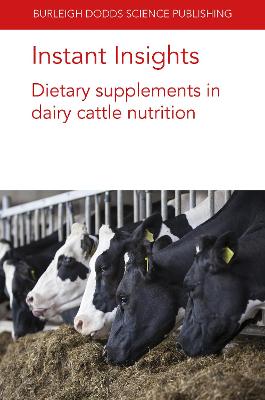 portes grátis
portes grátis
Instant Insights: Dietary Supplements in Dairy Cattle Nutrition
Kim, Prof Sung Woo; Yanez-Ruiz, Dr David R.; Naess, Dr Geir; Mansouryar, Morteza; Duniere, Dr Lysiane; Belanche, Dr Alejandro; Novoa-Garrido, Dr Margarita; Chaucheyras-Durand, Dr Frederique; Newbold, Prof. C. Jamie; Pandey, Dr Deepak
Burleigh Dodds Science Publishing Limited
09/2022
186
Mole
Inglês
9781801464253
15 a 20 dias
Chapter 2 - The use of probiotics as supplements for ruminants: Frederique Chaucheyras-Durand and Lysiane Duniere, Lallemand Animal Nutrition and Universite Clermont Auvergne, INRAE, UMR 454 MEDIS, France; 1 Introduction2 Critical periods in the ruminant lifecycle as targets for probiotics3 Definitions, delivery mechanisms and regulation4 Benefits and modes of action of probiotics: young ruminants5 Benefits and modes of action of probiotics: feed efficiency in adult ruminants6 Benefits and modes of action of probiotics: methane production7 Benefits and modes of action of probiotics: pathogen control8 Benefits and modes of action of probiotics: effects on the immune system9 Conclusions and future trends10 Acknowledgments11 Where to look for further information section12 References
Chapter 3 - Plant secondary compounds: beneficial roles in sustainable ruminant nutrition and productivity: David R. Yanez-Ruiz and Alejandro Belanche, Estacion Experimental del Zaidin, CSIC, Spain; 1 Introduction2 Essential oils (EO)3 Tannins4 Saponins5 Future trends and conclusion6 References
Chapter 4 - Seaweed as a potential protein supplement in animal feeds: Sung Woo Kim, North Carolina State University, USA; 1 Introduction2 Novel protein sources for animal feeds3 Seaweed production for foods and feeds4 Nutrient composition of seaweeds5 Seaweeds as protein supplements in feeds6 Conclusion7 Where to look for further information8 References
Chapter 5 - Nutritional and anti-methanogenic potentials of macroalgae for ruminants: Deepak Pandey, Nord University, Norway; Morteza Mansouryar, University of Copenhagen, Denmark; Margarita Novoa-Garrido, Geir Naess and Viswanath Kiron, Nord University, Norway; Hanne Helene Hansen, University of Copenhagen, Denmark; Mette Olaf Nielsen, Aarhus University, Denmark; and Prabhat Khanal, Nord University, Norway; 1 Introduction2 Nutritional value of macroalgae3 Digestibility of macroalgae as a feed or feed ingredients4 Anti-methanogenic properties of macroalgae5 Processing and seasonal effects on anti-methanogenic properties of macroalgae6 Future perspectives7 Conclusion8 Where to look for further information9 Funding10 References
Chapter 2 - The use of probiotics as supplements for ruminants: Frederique Chaucheyras-Durand and Lysiane Duniere, Lallemand Animal Nutrition and Universite Clermont Auvergne, INRAE, UMR 454 MEDIS, France; 1 Introduction2 Critical periods in the ruminant lifecycle as targets for probiotics3 Definitions, delivery mechanisms and regulation4 Benefits and modes of action of probiotics: young ruminants5 Benefits and modes of action of probiotics: feed efficiency in adult ruminants6 Benefits and modes of action of probiotics: methane production7 Benefits and modes of action of probiotics: pathogen control8 Benefits and modes of action of probiotics: effects on the immune system9 Conclusions and future trends10 Acknowledgments11 Where to look for further information section12 References
Chapter 3 - Plant secondary compounds: beneficial roles in sustainable ruminant nutrition and productivity: David R. Yanez-Ruiz and Alejandro Belanche, Estacion Experimental del Zaidin, CSIC, Spain; 1 Introduction2 Essential oils (EO)3 Tannins4 Saponins5 Future trends and conclusion6 References
Chapter 4 - Seaweed as a potential protein supplement in animal feeds: Sung Woo Kim, North Carolina State University, USA; 1 Introduction2 Novel protein sources for animal feeds3 Seaweed production for foods and feeds4 Nutrient composition of seaweeds5 Seaweeds as protein supplements in feeds6 Conclusion7 Where to look for further information8 References
Chapter 5 - Nutritional and anti-methanogenic potentials of macroalgae for ruminants: Deepak Pandey, Nord University, Norway; Morteza Mansouryar, University of Copenhagen, Denmark; Margarita Novoa-Garrido, Geir Naess and Viswanath Kiron, Nord University, Norway; Hanne Helene Hansen, University of Copenhagen, Denmark; Mette Olaf Nielsen, Aarhus University, Denmark; and Prabhat Khanal, Nord University, Norway; 1 Introduction2 Nutritional value of macroalgae3 Digestibility of macroalgae as a feed or feed ingredients4 Anti-methanogenic properties of macroalgae5 Processing and seasonal effects on anti-methanogenic properties of macroalgae6 Future perspectives7 Conclusion8 Where to look for further information9 Funding10 References


